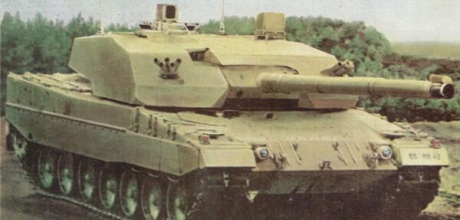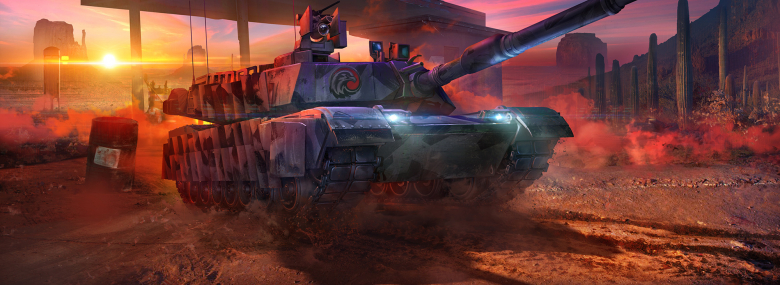
The M60T (or, using the Israeli export nomenclature, Sabra Mk.2) is basically a M60A3 Main Battle Tank, heavily upgraded for Turkish service by the Israelis. Mentioning Turkey and Israel in one sentence is usually done only when describing an international conflict, but there have been instances where both countries could get along remarkably well, such is the abovementioned upgrade program by the Israeli Military Industries company.
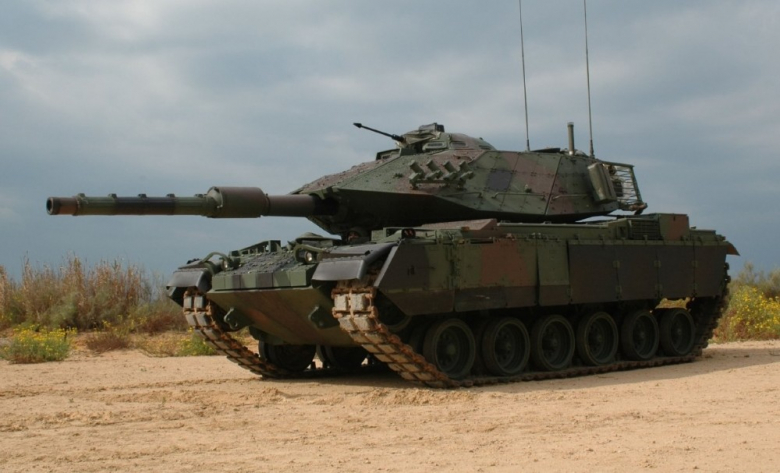
M60T
Of course, Israel has a long tradition of using upgraded American vehicles to this day that started soon after its birth in 1948. For decades, the legendary Super Shermans formed the backbone of Israeli armored power. They were gradually replaced by the Centurion and Patton tanks, the latter serving in the IDF under the name of “Magach.”
The history of the Magach tanks in Israeli service is long and will be covered in the future in a series of separate articles when the Israeli branch is introduced, but here’s what basically happened. During the Six Day War, Israel managed to achieve a stunning military victory over numerically superior opponents, completely decimating Syrian and Egyptian air forces and striking massive blows against enemy armored formations. This victory, however, had a downside. The Israeli forces were lulled into a complacency of sorts – after all, it had taken only six day to knock the Arabs out of the fight, what threat could they possibly pose. Another problem was the corruption – like any other army in the world, the Israeli one was not immune to this issue and when the war broke out once again, entire units found themselves without gas masks, blankets and other equipment, sold by corrupted officers for profit.
The Egyptians and Syrians did, however, learn from the 1967 war and re-armed their forces with advanced equipment of Soviet origin. Amongst the most important pieces were the BMP-1s armed with Malyutka missiles as well as hundreds of infantry-borne Malyutka launchers. Six years after their defeat, in 1973, the Arabs returned in what became known as the Doomsday War.
The pride of the IDF, elite Israeli tank units armed with Magach tanks, was decimated by volleys of Malyutka missiles. What was even worse, the Magach tank had a massive flaw – the hydraulic fluid of its turret drive was highly flammable and frontal penetrations, even if not fatal to the crew by themselves, often resulted in the men inside being sprayed by burning hydraulic fluid and perishing in the flames. This flaw was only rectified after the war by using a hydraulic fluid with higher burning point, but by then the damage was already done.
Even though the 1973 war was won by the Israelis, the victory was paid dearly and the need to upgrade the Israeli equipment became clear. Following the war and the 1982 Lebanese experience, the Magach was upgraded with numerous systems, including the Blazer Explosive Reactive Armor (the first such system used on the Patton).
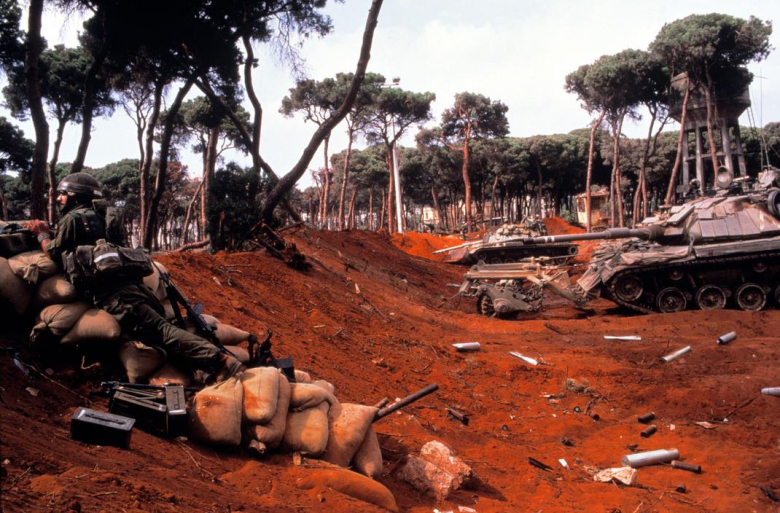
Magach in Lebanon, 1982
But in the mid-1980s, the Patton, even with the upgrades, was considered obsolete due to its insufficient armor protection – kinetic penetrators of the era were often capable of defeating double the amount of armor the M60 series offered and the appearance of more advanced HEAT projectiles made even the later Blazer variants insufficient. It was therefore decided to provide the Magach tanks with even deeper upgrades, including brand new passive armor based on the Merkava armor design. This version became known as the Magach 7. The first Magach 7 tanks were introduced in the early 1990s, the later 7C variant in the mid-1990s. They are easily recognizable by the sharp-angled additional armor on top of the original M60 turret.
The Magach 7 armor worked splendidly. During one incident in 1997, Hezbollah terrorists fired twenty Malyutka missiles on one Magach – only two of them penetrated and the crew survived the ordeal. Another Magach was later destroyed by a massive IED, but no tank can survive an explosion of hundred kilos of explosives under it. The Magach 7 was therefore considered a major success, especially in the later iterations. Seeing this success and considering the fact that many U.S.-friendly countries in the world were armed by the M60 series, the Israelis smelled an opportunity – for their use, they had their own closely guarded Merkava tank, but why not offer a significant upgrade to the M60 series, based on the Magach 7, for export?
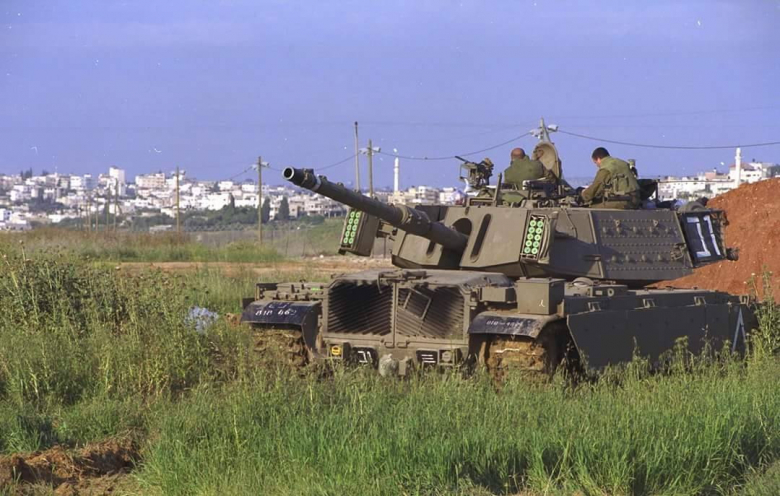
Magach 7A in Gaza, 2002
The result of this line of thought was the Sabra, an advanced M60 modification by Israeli Military Industries (IMI), based on the Magach 7 design. Now, the Israelis only had to find a customer – and luckily for them, by the early 2000s, Turkey needed just such an upgrade for its aging fleet of Pattons. But first, a few words about Turkey, its military and its special relationship with the Israelis. Modern day Turkey was born from the ashes of the Ottoman Empire, ushered into the world by its visionary leader, Mustafa Kemal, also known under the moniker of “Atatürk”, who wanted to turn Turkey into a strong, independent, western-style country.
Learning from the Great War experience, Turkey tried to stay out of major conflicts during most of the 20th century. Turkey stayed strictly neutral during the Second World War, only leaning towards the Allies when the Nazi defeat was certain and did not participate in other conflicts either, save for the Korean War (a small contingent of Turks fought under the United Nations banner).
Turkey joined NATO in 1952 (ironically along with Greece), firmly aligning itself with the West, but its position was always a special one, both regionally (it shared a border with the Soviet Union) and politically (being the only Muslim country in NATO). The latter played a role in its relationships with Israel but unlike other countries in the Middle East, Turkey never adopted the firmly anti-Israeli stance, instead opting for a careful, civilized dialogue with Israel. It wasn’t a friendship; it wasn’t even an easy relationship at times (Turkey for example condemned the Israeli territory gains from 1967), but throughout the 1980s and the 1990s, the Israeli-Turkish relationship suffered few setbacks and even prospered.
The same cannot be said of NATO. Turkish political position was seriously damaged by the 1974 Cyprus invasion and to this day, Turkey holds the dubious honor of being the only NATO country to wage war against a NATO ally. This event had a widespread impact that, unlikely as it seems, influenced the Turkish armored forces in a major way.

Sabra Mk.2
Since the 1950s, Turkey was armed with Patton series tanks, purchasing over 500 M47 tanks by 1954 and several thousand M48 tanks in the mid-1960s. In 1975, as a result of the Cyprus invasion, Turkey came shortly under an American arms export embargo, freezing the plans to purchase more modern American Main Battle Tanks. While the embargo itself was lifted in 1978, the deterioration of the Turkish relations with the United States made it almost impossible to acquire modern American weaponry.
Feeling the need to upgrade their tank formations, the Turks turned to the Germans instead, ordering several variants of the Leopard 1 Main Battle Tank, starting from 1982 – this is how Turkey ended with its strange motley of German and American Main Battle Tanks, but that is a story for another time. Instead, let’s shift to 1992 and the fall of the Soviet Union. Feeling no need to hold such massive forces in Europe anymore, the United States of America released a large number of surplus M60-series tanks on the market.
Turkey used the opportunity to, starting from 1993, purchase 274 M60A1 tanks and 658 M60A3 tanks. It was this assortment of tanks that Turkey entered the 21st millennium with.
Skipping another decade, by the early 2000s, Turkey found itself with a generally obsolete fleet of tanks. The Iraq war has shown the performance (and the limits) of older designs in full and the Turks found it prudent to start thinking about their upgrades. There were three main directions they focused on:
- Purchasing new Main Battle Tanks
- Upgrading the Leopard 1 fleet
- Upgrading the M60 series fleet
The first approach ended with the purchase of 298 Leopard 2A4 tanks between 2006 and 2009. The second approach resulted in the Leopard 1T Volkan from the same time period. But it is the third one that interests us the most.
There were basically two contenders for the major Turkish M60 upgrade – Israeli Military Industries with their Sabra tank and General Dynamics with the 120S tank (effectively a combination of an old M60 hull and a M1A1 Abrams turret). Both tanks fulfilled the essential requirement of carrying a 120mm smoothbore NATO standard gun – unlike the earlier Magach tanks, the Sabra had its 105mm rifled M68 version replaced by an Israeli produced M253 cannon (licensed Rheinmetall smoothbore).
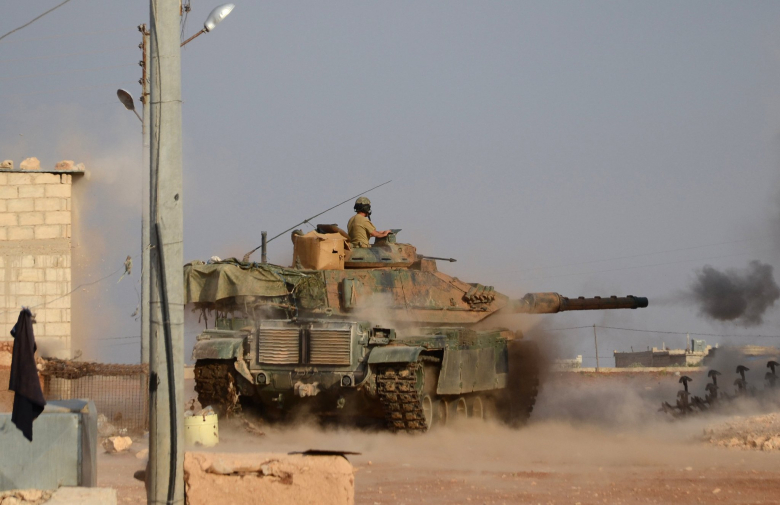
M60T in Syria
The Americans were in a better position politically, but Israel offered a better off-set program. The details of the offer are not entirely known – arms business involves a lot of backroom deals and when it comes to such deals, the Israelis are true masters, perhaps even the best in the world. Either way, a contract was signed between Turkey and IMI in 2002.
The Israelis first produced the Sabra Mk.1 – it was a true masterpiece of engineering, offering significant protection upgrade over the old M60A3 tank. It was, however, simply too expensive for the Turks – as a result, they settled for a cheaper, somewhat downgraded version of the Sabra called Sabra Mk.2 by the Israelis, accepted into service under the name M60T.
The M60T is easily recognized by its arrow-shaped turret. Thick slabs of armor cover the original turret form of the M60A3, significantly increasing protection against all kinds of threats – or at least it did back in 2002. The hull is covered by additional NERA armor as well – the exact level of protection is not known, but the armor is assumed to be effective against older Soviet era ATGMs and kinetic penetrators. Additional protection measures include:
- Improved, insulated ammunition storage
- Rear turret slat cage, effective against RPGs
- Automatic fire detection and suppression system
- IR and Laser warning system
- Smoke grenade launchers
- NBC protection
The Israelis have also offered a hard-kill APS system for the Sabra, but the Turks declined the offer. Other options included:
- Commander’s panoramic sights
- Extra roof protection
- Advanced navigation system
Of course – all this extra gear is heavy. The tank weighs 56 to 59 tons, depending on configuration (compared to the original 52 tons of the M60A3). To compensate for that, the vehicle has a German 1000hp MTU MT-881 KA-501 diesel engine, paired with Renk 304S transmission, allowing it to go as fast as 55 km/h (or 30 km/h off-road) and to accelerate to 32 km/h under 8 seconds. Compared to the M60A3, the tank also has new shock absorbers for smoother ride, new final drives (improving their durability) and improved tracks.
The biggest improvement, however, is arguably its firepower. The M60T is armed with the 120mm M253 smoothbore gun, controlled by the Elbit Knight III fire control system. The gun is fully stabilized, can elevate to +20 degrees and depress to -9 degrees. The tank is equipped with gunner day/night optics with a thermal imager and a laser range finder. The turret is rotated electrically, eliminating the old Patton hydraulic system flaw. The gun can fire NATO standard 120mm ammunition.

Last but not least, the tank features a number of crew improvements such as enhanced displays. Further improvements such a battle management system were offered by the Israelis but ultimately rejected. Overall, for its time, it was still a very capable machine.
Between 2006 and 2010, Israel delivered 170 of these vehicles to Turkey for 687 million USD, but the deal got politically complicated – the relationships between Israel and Turkey deteriorated in 2010 following the Gaza convoy incident. As a result, Turkey cancelled the majority of military co-operation with IMI as well as other deals. The rift lasted until 2016, but even with the reconciliation agreement from June 2016, the relations would take time to mend. In other words, it’s unlikely that more M60Ts would be ordered or delivered, especially considering their combat performance.
During the Turkish incursion into Syria, several M60Ts were hit with Russian Kornet missiles. These hits penetrated the by now insufficient armor, destroying the vehicles. This remains the only combat use of the M60T to date (at least in an actual battle) and while the debate whether the losses were caused by vehicle obsolescence or by poor tactics is still going on, the losses certainly affect the M60T image.
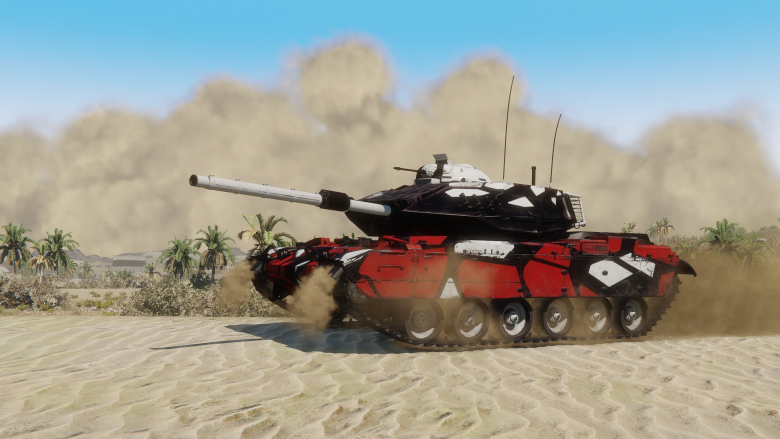
Israeli Military Industries continue to offer the Sabra as a solution for countries with large fleets of M60 series tanks, even to countries who do not have these vehicles at all (recently, the Sabra was offered to the Czech Republic as its future MBT, replacing the aging T-72M4CZ), but the vehicle is generally considered as obsolete – in other words, for all its qualities at the time of its introduction, it’s unlikely that the Sabra will gain new customers in the future, remaining instead a Turkish oddity to be eventually replaced by the indigenous Turkish Altay Main Battle Tank.
In Armored Warfare, the M60T will be a premium Main Battle Tank – but fear not, more Israeli upgraded M60 progression vehicles will appear in the future as well.
We’ll see you on the battlefield!




